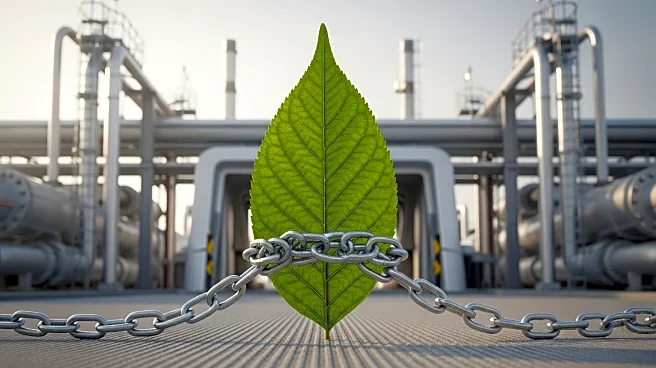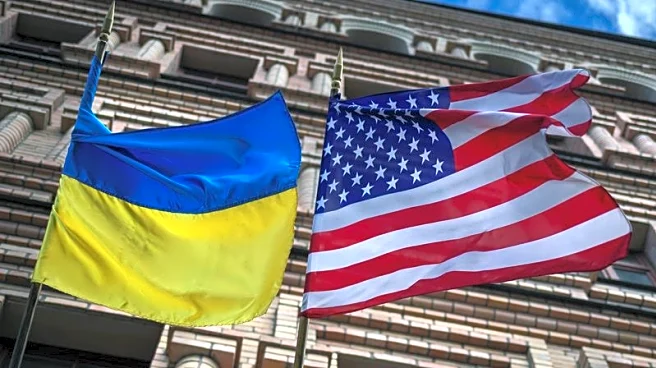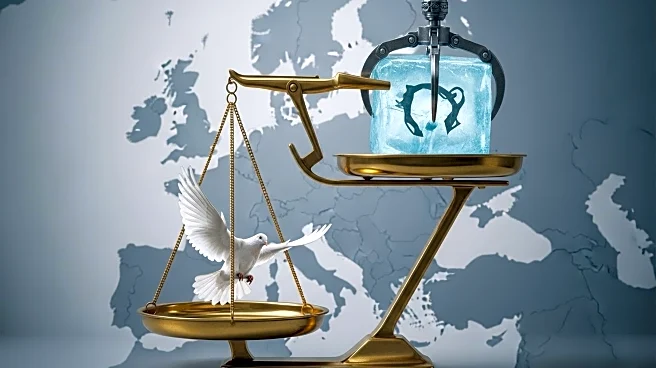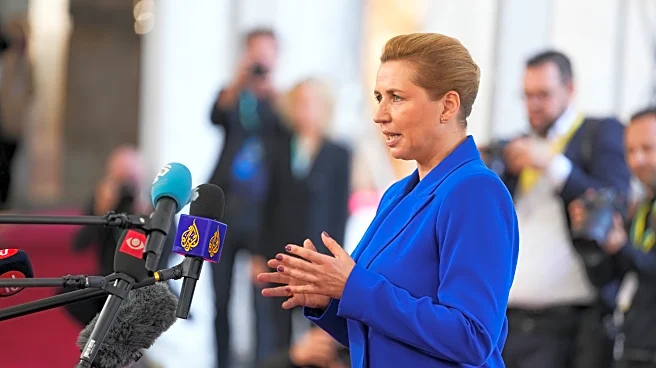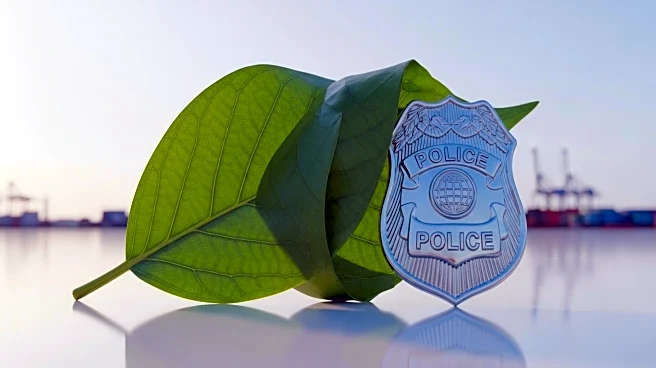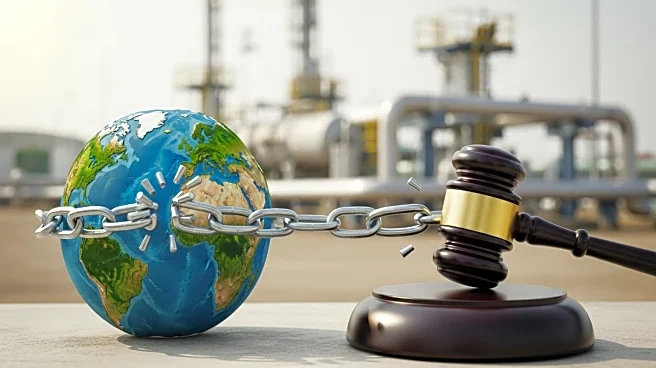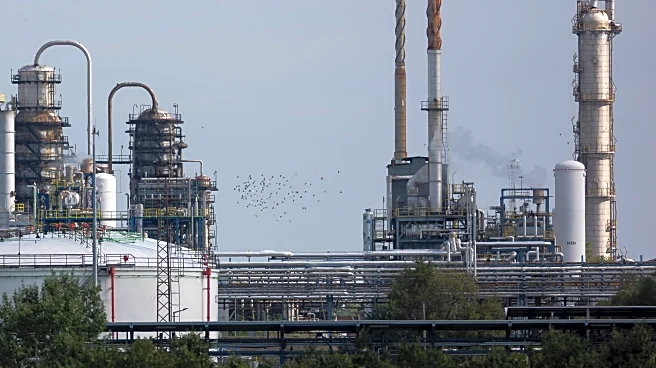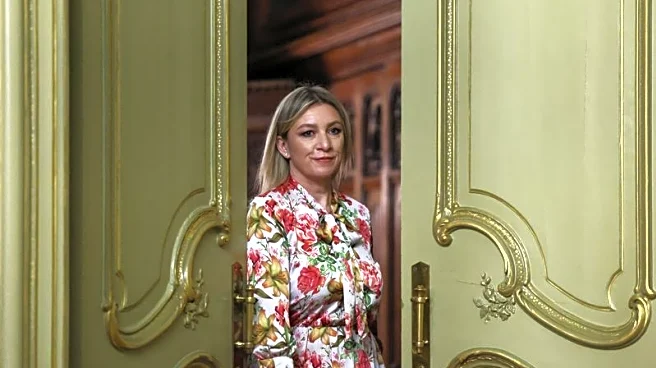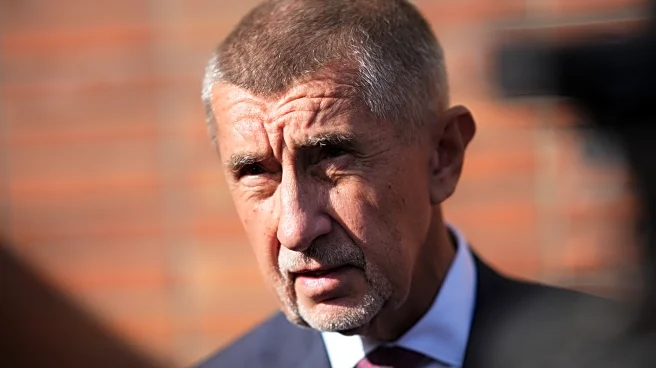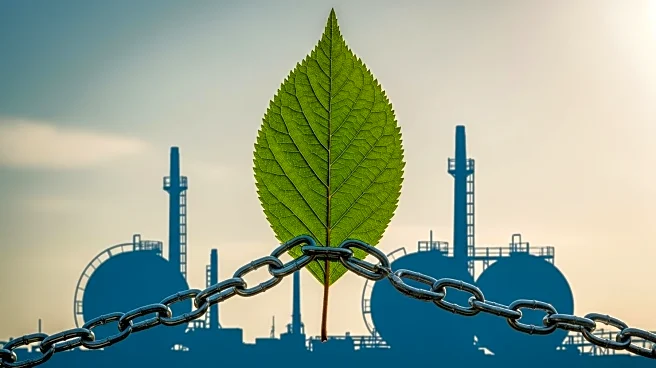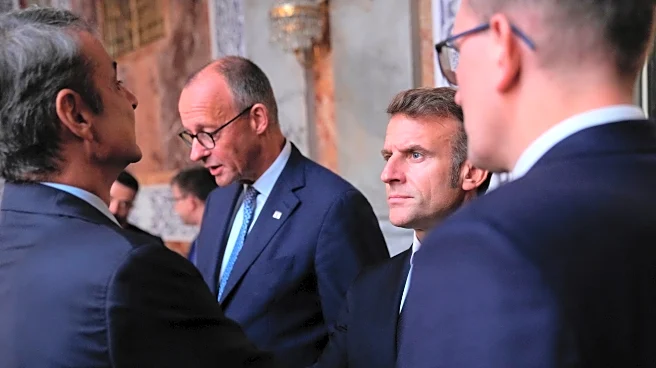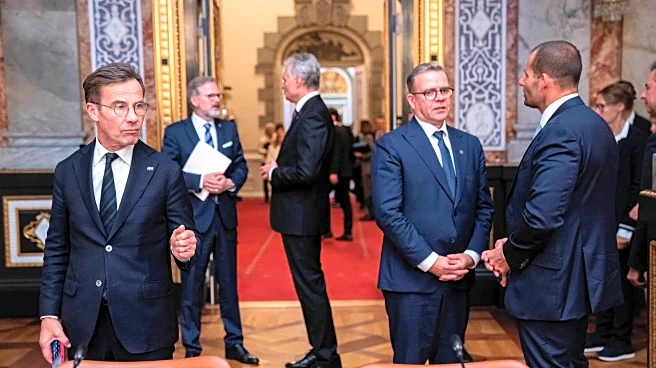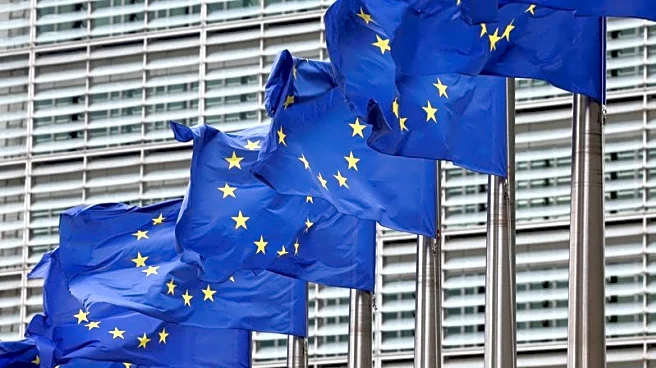What is the story about?
What's Happening?
Greenpeace activists have blockaded the Fluxys LNG terminal at the port of Zeebrugge, Belgium, to protest against Russian and U.S. LNG imports into the European Union. Approximately 70 activists used small boats, rafts, and kayaks to stage the protest, which coincides with discussions on the 19th EU sanction package related to the war in Ukraine. Greenpeace's ship, Witness, displayed a banner with images of Vladimir Putin and President Trump, highlighting the group's demand to end fossil gas imports. The protest is part of a series of actions across Europe, urging the EU to phase out fossil gas by 2035.
Why It's Important?
The protest underscores the growing tension between environmental groups and energy policies reliant on fossil fuels. Greenpeace's actions highlight the environmental and geopolitical implications of continued reliance on LNG imports, particularly from Russia and the U.S. The protest aims to accelerate the transition to renewable energy, emphasizing the need for energy independence and security. The EU's energy policies are under scrutiny as they balance environmental goals with energy needs, and Greenpeace's actions may influence public opinion and policy decisions regarding future energy strategies.
What's Next?
The ongoing protest at the Zeebrugge terminal may prompt further discussions within the EU about energy policies and the role of LNG imports. As the EU considers a ban on Russian gas imports by 2027, Greenpeace's demands for a freeze on new U.S. contracts and a commitment to phase out fossil gas could gain traction. The protest may also lead to increased pressure on EU member states to invest in renewable energy sources and reduce dependency on fossil fuels. The outcome of these discussions could shape the EU's energy landscape and its approach to climate change mitigation.
AI Generated Content
Do you find this article useful?
